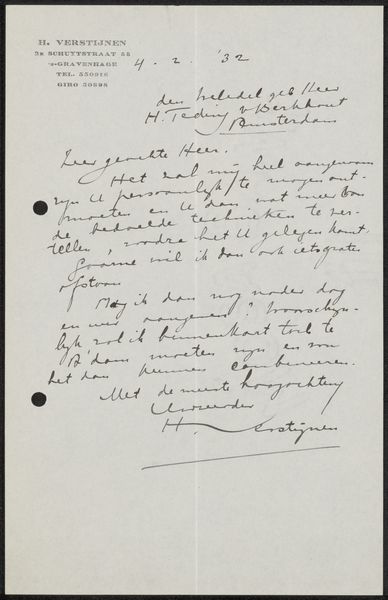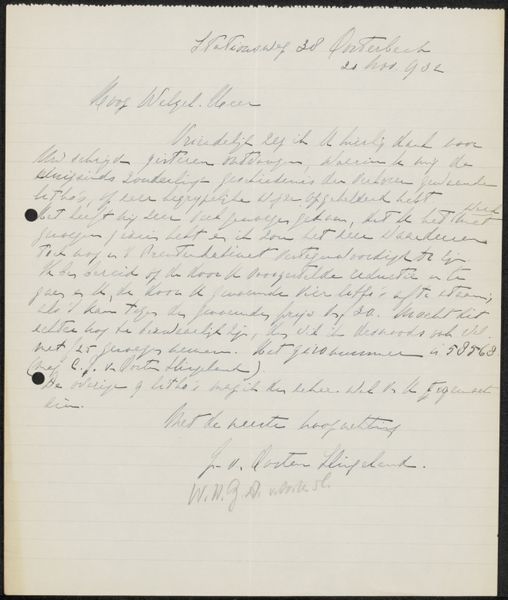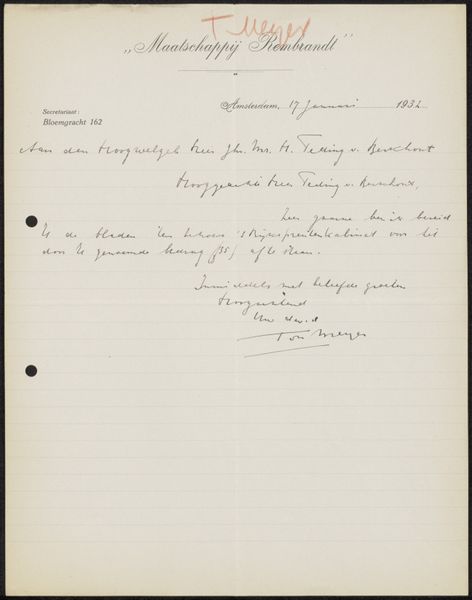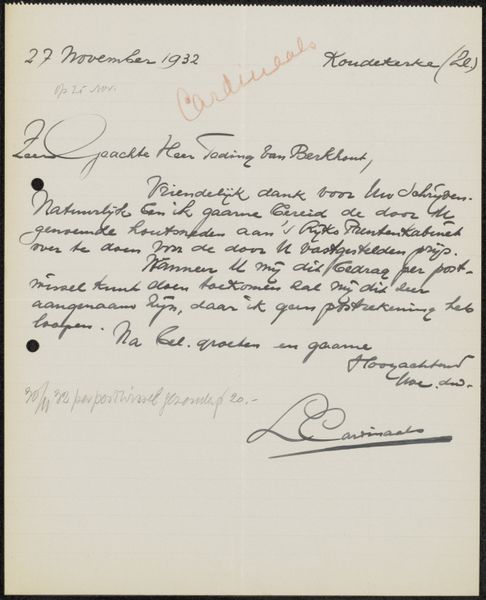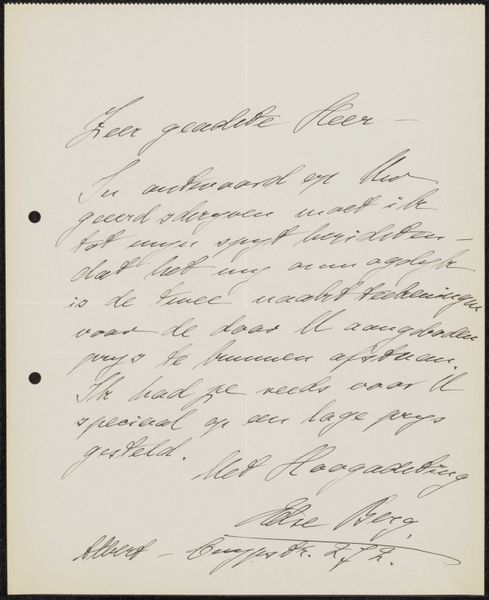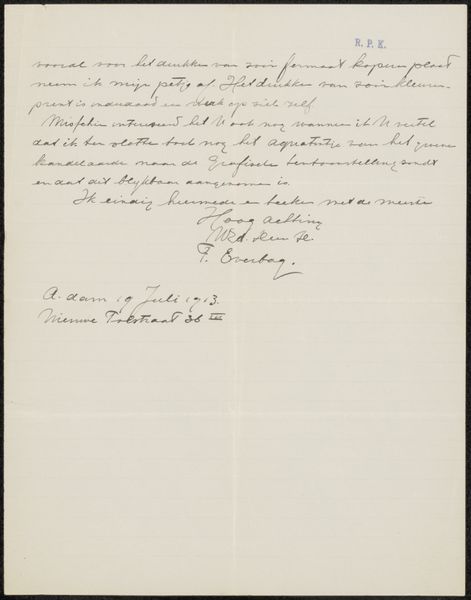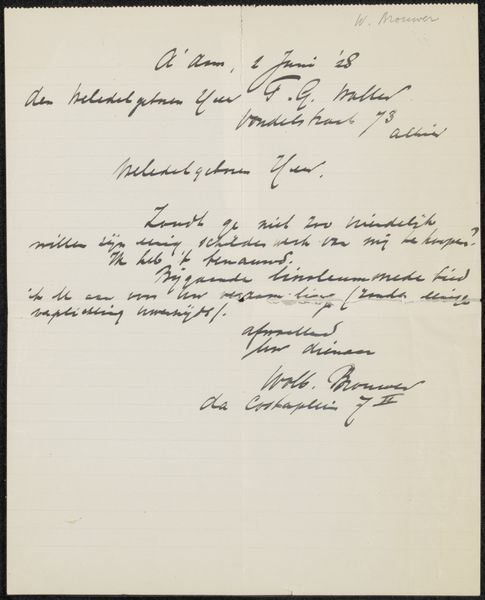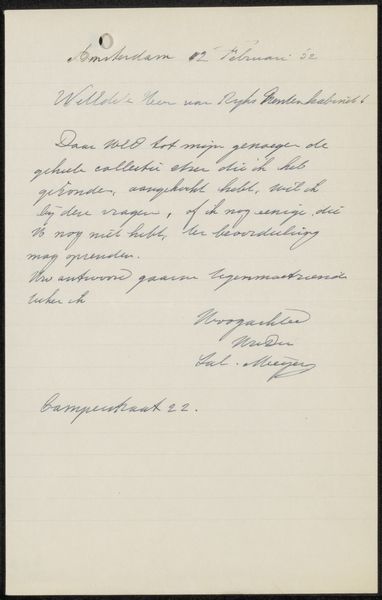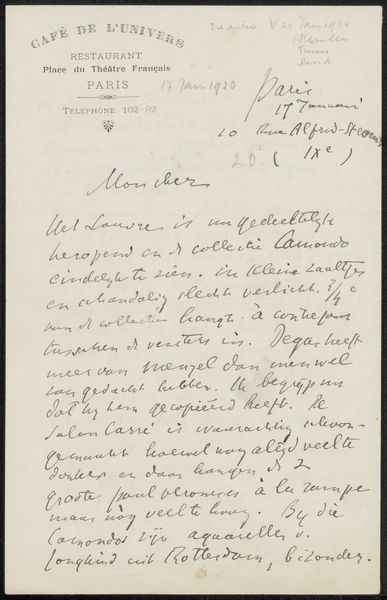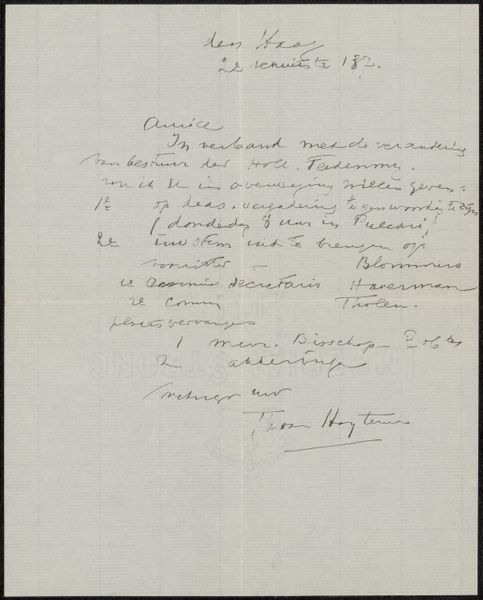
Brief aan jonkheer Hendrik Teding van Berkhout (1879-1969) Possibly 1932
0:00
0:00
drawing, paper, ink
#
drawing
#
paper
#
ink
Copyright: Rijks Museum: Open Domain
Curator: This is "Brief aan jonkheer Hendrik Teding van Berkhout (1879-1969)" attributed to Johannes Frederik Engelbert ten Klooster, possibly created in 1932. It's ink on paper, a personal letter seemingly. Editor: It looks incredibly formal, but also…personal? There's something inherently vulnerable about seeing someone’s handwritten words, their very particular script. Curator: Letters offer such unique insights into social dynamics. Here, we see ten Klooster writing to Jonkheer van Berkhout. Jonkheer is an honorific, suggesting the recipient was of noble birth, highlighting the societal structures present. Editor: Right. And the act of writing itself. Look at the way certain words are emphasized; you can feel the intent behind them. There is “vertrouwelijk schryven”, translated to "confidential writings," implying intimacy and perhaps a professional undertone as well. What do you make of that choice? Curator: Absolutely, the language choices speak volumes. I'd speculate this correspondence pertains to a commissioned art piece. Ten Klooster offers either eleven paintings or some prints within a few days to Berkhout. Then 40 "inkt tekeningen" or ink drawings which can be bought immediately instead, with a follow up of price. This seems to imply van Berkhout held some sort of patron status. It tells us much about how artists survived in those days, reliant on such patronage. Editor: The immediacy, the mention of numbers, does suggest a business transaction. I am, however, particularly curious about the inclusion of “dank en beste spoetry" at the end. It seems too…intimate to throw out after a description of the transaction? Why poetry? Was he also an artist? Curator: Or it speaks of an understanding on an aesthetical level; Ten Klooster wants his work appreciated as more than just a commodity. Maybe he's hoping van Berkhout views his work as poetry, hence worth a higher amount than what’s being offered. Editor: It certainly reveals the complex negotiations that occur in any artistic production, doesn’t it? Curator: Precisely. These subtle signals give insights to power, intention, and how value is ascribed to art historically. It goes beyond merely subject and technique. Editor: I see echoes of modern creative pursuits too; struggling for respect, hoping to capture that initial intention. Thank you for illuminating this further!
Comments
No comments
Be the first to comment and join the conversation on the ultimate creative platform.
